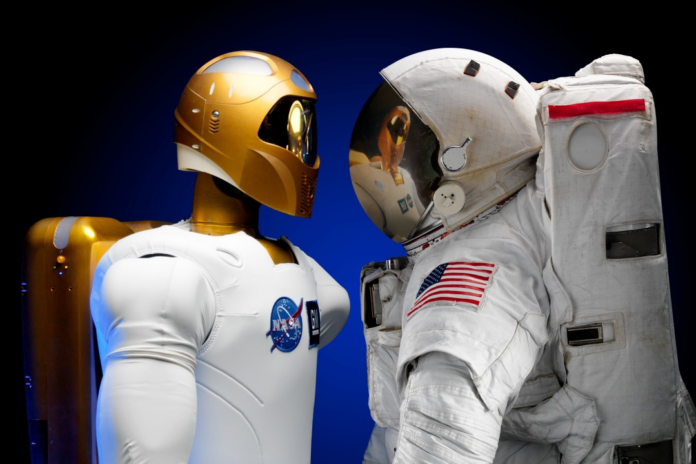NASA has taken a monumental leap in integrating artificial intelligence (AI) into its operations, marking a transformative moment for both space exploration and disaster management. By leveraging the power of AI, NASA’s ‘Disasters Program’ has introduced revolutionary tools that enhance disaster preparedness, response, and recovery, showcasing the immense potential of space technology in real-world crisis situations.
AI’s Role in NASA’s Disaster Program
Through its ‘Disasters Program,’ NASA has developed state-of-the-art AI-driven tools and datasets designed to tackle natural calamities such as hurricanes, floods, and wildfires. One of the most remarkable applications of these tools was during Hurricane Ida, a catastrophic storm that struck Louisiana on August 21, 2021. Known as one of the most devastating hurricanes in U.S. history, Ida left widespread destruction in its wake.
In this emergency, NASA’s AI-powered Disasters Mapping Portal became a critical asset. The portal provided satellite-based data on soil moisture levels, vegetation changes, precipitation, and power outages to relief organizations, enabling them to plan and execute relief efforts more effectively.
How NASA’s AI Tools Saved Time and Lives
One of the standout contributions of AI during Hurricane Ida was the deployment of NASA’s damage assessment tool. By analyzing satellite imagery, the AI models identified blue tarps placed on roofs post-hurricane, signaling damaged structures. This automated process allowed disaster management teams to rapidly assess the scale of destruction, prioritize affected areas, and deploy resources efficiently.
Without the integration of AI, such detailed assessments would have been labor-intensive and time-consuming, potentially delaying critical relief efforts. Moreover, the precision of AI far surpasses what human teams could achieve manually, making it an indispensable tool in disaster response.

Beyond Hurricanes: Expanding AI’s Applications
NASA’s commitment to open science and collaboration is evident in its partnership with IBM to develop open-source AI models. These models aim to process NASA’s vast satellite data archives, making it easier for researchers, governments, and organizations worldwide to access and utilize this data.
This initiative has far-reaching implications beyond disaster management. For instance, the same AI-driven insights can be applied to monitor agricultural conditions, predict droughts, and manage water resources, thereby addressing some of the most pressing challenges faced by humanity today.
AI’s Impact on Future Disaster Management
Looking ahead, NASA’s AI-based tools are poised to redefine disaster management on a global scale. The integration of AI with NASA’s satellite data enables the creation of predictive models that can forecast natural disasters with greater accuracy. These models could provide early warnings for hurricanes, earthquakes, and other calamities, potentially saving countless lives.
Furthermore, AI’s ability to process and analyze massive datasets in real-time offers unparalleled opportunities for real-time disaster response. By identifying patterns and anomalies in satellite data, AI can help emergency teams anticipate the trajectory of storms, locate vulnerable populations, and optimize evacuation plans.
NASA’s Vision for Open Science and Collaboration
NASA’s collaboration with IBM highlights its dedication to fostering innovation through open science. By making its AI tools and satellite data accessible to the global community, NASA is empowering scientists, policymakers, and organizations to tackle challenges ranging from climate change to urban planning.
The use of AI in NASA’s operations is also a testament to the agency’s adaptability and forward-thinking approach. As technology continues to evolve, NASA’s embrace of AI ensures that it remains at the forefront of scientific discovery and innovation.
The Broader Implications of AI in Space Technology
NASA’s successful integration of AI into its disaster program underscores the broader potential of AI in space technology. Beyond Earth, AI is already being used to analyze data from Mars rovers, optimize spacecraft navigation, and search for signs of life on distant planets.
As AI becomes more sophisticated, its applications in space exploration will only expand. From designing autonomous spacecraft to managing space habitats, AI is set to play a pivotal role in humanity’s journey to the stars.
A New Era of Space Tech
NASA’s use of AI in disaster management represents a paradigm shift in how we address global challenges. By harnessing the power of AI, NASA is not only advancing space technology but also making a tangible difference in the lives of people affected by natural disasters.
As the agency continues to refine its AI tools and collaborate with partners worldwide, the potential for innovation is limitless. NASA’s efforts are a powerful reminder that the intersection of technology and humanity can lead to transformative solutions for a better future.


